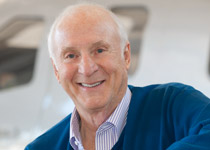Proficient Pilot: Watts up?
Turned on by electricity
So far, my tally has reached 361. My long-term goal has been to reach 400, but that is becoming less likely. My short-term goal is to make the Pipistrel Alpha Electro number 362. This electrically powered, light sport aircraft is made in Slovenia, and seven of them have thus far reached our shores. It is the world’s first and only certified electric airplane. (Thus far, the Electro has been approved for LSA operations in Europe, Australia, and New Zealand.)
The primary advantages of an electric airplane are obvious. No avgas is required, nor must payload be sacrificed to carry it. This, of course, substantially lowers the hourly operating cost as well as the risk of engine fire, especially because there is no engine. Nor is there risk of fire in the unlikely event of a crash landing. The airplane is relatively quiet; there is only propeller noise. Pipistrel claims that the chances of an electrical fire are extremely remote—100 million to 1 against it. Landing weight is always the same as when you took off. The electric airplane, of course, does not create pollution, but this does not factor in the environmental distress—and the cost of energy—resulting from having to charge the 399-volt batteries.
Motor reliability and smoothness are superior to those of the piston engine, and the Pipistrel-made powerplant requires no maintenance. I mean, what can go wrong with it? You need only to overhaul the motor every 2,000 hours until it reaches its maximum life of 6,000 hours. The batteries are made by Samsung and are said to last 17 years.
Although I have yet to fly the Electro—or any electrically powered aircraft, for that matter—I have been told that starting the motor is little different than flipping a wall switch to turn on a ceiling fan, and the “throttle” is no more than a rheostat, sort of like a light dimmer. I don’t know about you, but I think I would miss the sound of a reciprocating engine coming to life and its promise of power and flight. Color me weird, but I even enjoy the momentary aroma of exhaust and spent avgas when firing up certain open-cockpit biplanes. I certainly would miss the challenge involved in starting some engines, especially the large radials that require an orchestrated flurry of coordinated hand movements. I love the sound and feeling of these beasts awakening one cylinder at a time while producing prodigious volumes of smoke, barking and banging all the while and then mellowing into a smooth, satisfying rumble.
The simplicity of electric propulsion makes us realize how much there is to learn about operating internal combustion engines. There is no oil temperature, cylinder head temperature, or oil pressure with which to be concerned. You certainly don’t have to worry about carburetor or induction icing. Detonation? Preignition? What’s that? The art and science of leaning disappears, as does the “automatic rough” we experience when flying over large bodies of water or at night—or does it?
The good news about piston engines, though, is that you can land almost anywhere and know that you can fill the tanks instead of having to wait around for exasperating hours while batteries charge.
In fact, there are such dramatic differences between operating an electric motor and a reciprocating engine, that I would not be surprised if the FAA restricts those who learn to fly in electric airplanes from flying aircraft with reciprocating engines.
Performance of the Electro is not bad for a light sport aircraft powered by a 60-kilowatt (80-horsepower) “engine.” It can climb at 1,220 fpm, cruise at 85 knots, and carry 400 pounds of payload. The Electro’s most serious handicap is restricted endurance because of limited battery capacity. Range, for example, is only 70 nm. It can do pattern work for an hour with a 20-minute reserve, but then you have to land and either charge or exchange the batteries.
The limitations of the Alpha Electro are understandably a cause for skepticism. Cross-country flight is virtually impossible unless you enjoy landing at a whole lot of airports. Many wonder how such a seemingly impractical machine can find a place in the U.S. market. This question, however, is reminiscent of when, in 1783, Ben Franklin—then the U.S. diplomatic representative to France—joyously witnessed the magic of a hot air balloon rising serenely from the Champ de Mars in Paris. A nearby observer asked, “But what good is it?” Franklin famously responded with, “What good is a newborn baby?”



